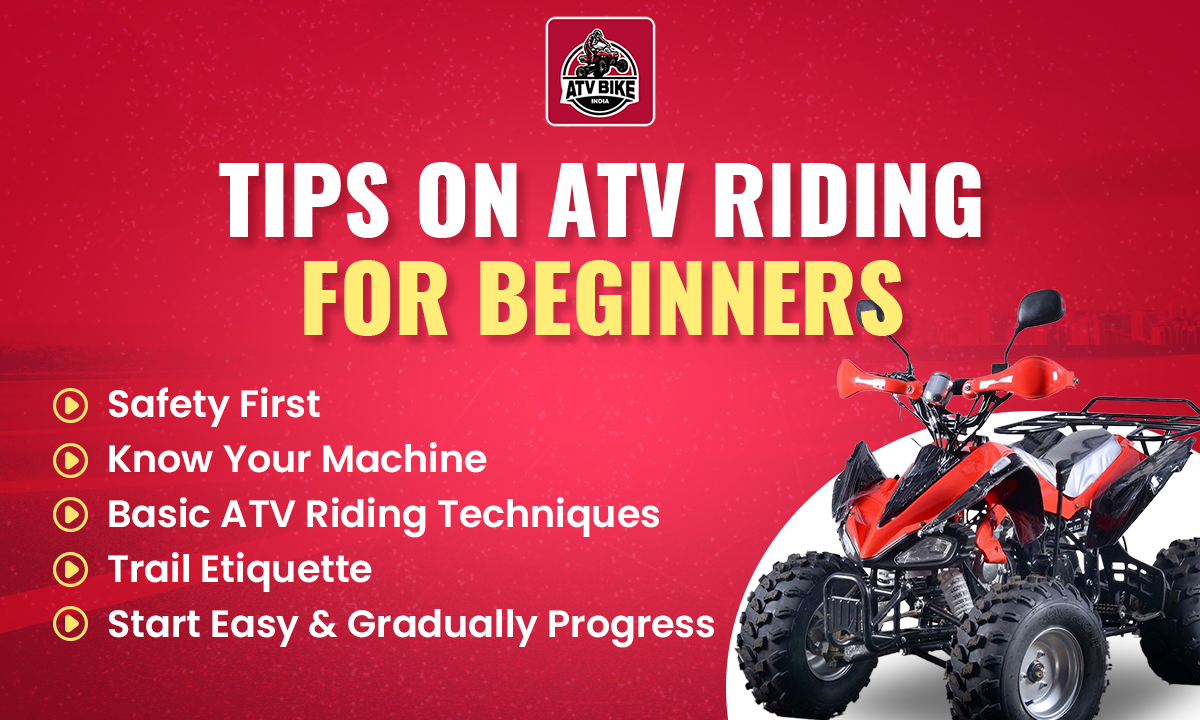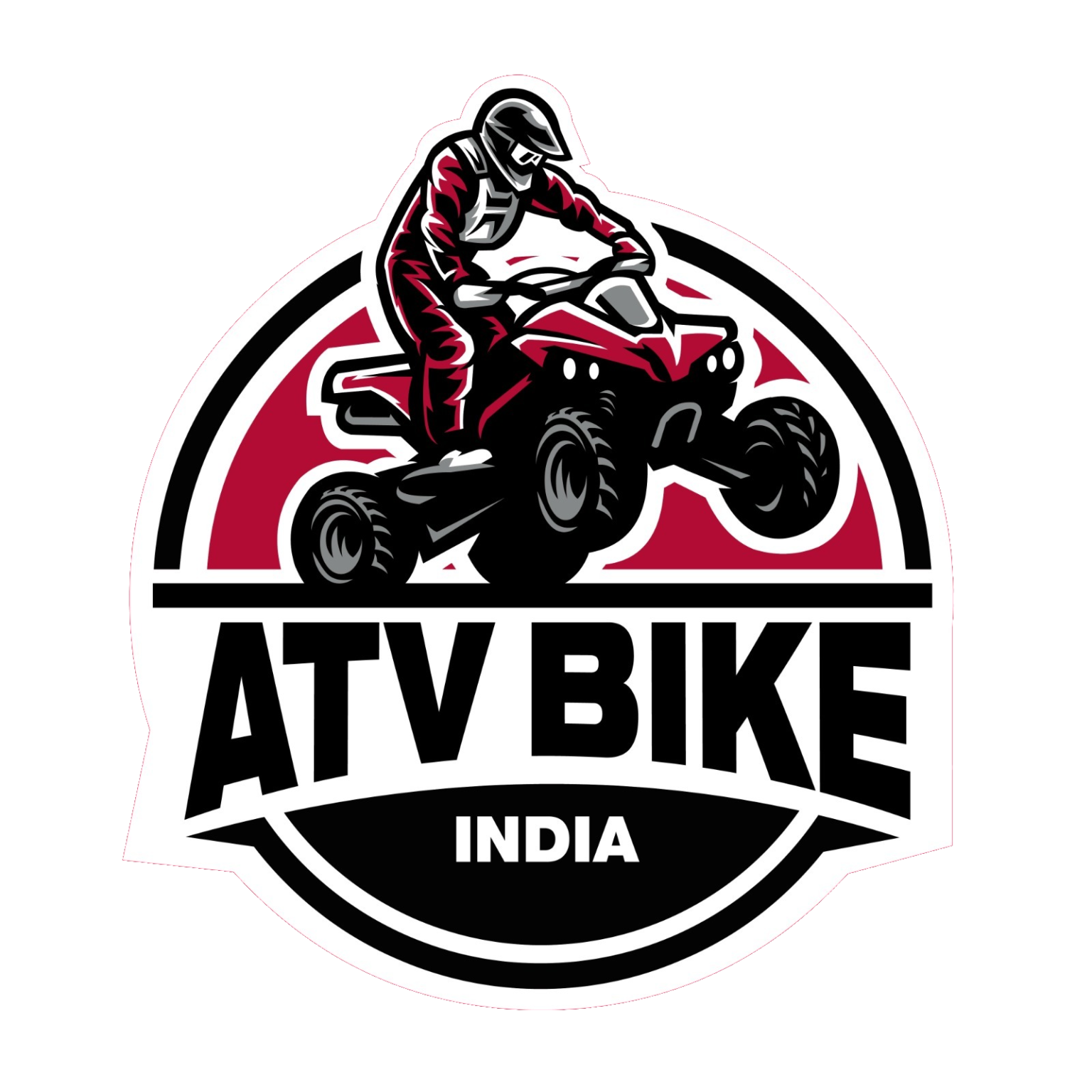If you’re a thrill-seeker drawn to the power and rugged fun of ATV riding (All-Terrain Vehicles), you’re in for a fantastic adventure. Before you hit the trails, here’s your beginner’s guide to safe and enjoyable ATV bike riding.
Tips on ATV Riding for Beginners

Safety First
ATV riding is thrilling, but responsible riding means putting safety first. It will minimize risks and maximize your enjoyment. Here’s how to make safety your priority:
Helmet and Gear
A helmet designed specifically for ATV bike riding is your most important piece of safety gear. Full-face helmets provide the best protection. You can get these safety accessories from the ATV manufacturer from whom you will buy the ATV bike.
Additionally, invest in eye protection (goggles or a face shield), sturdy boots that cover your ankles, gloves for better grip and protection, and long pants and a long-sleeved shirt to protect your skin from brush, branches, and potential scrapes.
ATV Course
A certified ATV safety course is highly recommended, even for those who have some off-road experience. These courses teach not only fundamental riding skills but also hazard recognition, environmental awareness, appropriate trail selection, and emergency procedures that can be invaluable.
Start Small
Choose a beginner-friendly ATV like Falcon Plus 125cc or Solid ATV 135cc with manageable power and size. It’s tempting to opt for the most powerful and biggest machines like the Hunk ATV 250cc or the Super Bull ATV 200cc, but those are best left for more experienced riders. A smaller ATV allows you to build confidence and develop handling skills without being overwhelmed.
Know Your Machine
Your ATV is a complex piece of machinery, and understanding how it works is key to both safety and enjoyment. Here’s how to get familiar with your ride:
Owner’s Manual
Your owner’s manual is not just a boring read—it’s your guide to safe and efficient ATV riding, especially if you’re buying an ATV bike for kids. Become familiar with every control, from the throttle and brakes to the headlight switch and other functions. Understand any different riding modes (e.g., sport, work), maintenance recommendations, and safety warnings specific to your ATV.
Practice in Open Space
Before tackling any challenging terrain, find a wide-open, flat area (a large field or empty parking lot works well). Get the hang of these basic skills:
- Starting and Stopping: Practice starting the engine smoothly, shifting into gear, and stopping in a controlled manner.
- Throttle Control: Gently practice using the thumb throttle for gradual acceleration and deceleration. Get a sense of how sensitive it is.
- Turning: Experiment with making wide, smooth turns in both directions. Understand how the machine reacts when you shift your weight.
- Basic Braking: Learn how to apply the brakes effectively for smooth stops and emergency situations.
Basic ATV Riding Techniques
Mastering these core riding techniques will significantly improve your ATV experience, keeping you safe and making those off-road adventures more enjoyable:
Body Position
The ideal riding posture is slightly forward while riding your ATV, with your knees bent and close to the gas tank. Keep your elbows out, not locked, to allow for better control and to absorb shocks from uneven terrain. This position provides balance, flexibility, and the ability to shift your weight as needed.
Smooth Throttle
The thumb throttle controls your acceleration and is one of the most important skills to master. Instead of jerking the throttle and risking losing control, practice starting slowly and increasing pressure smoothly. Aim for steady, controlled acceleration and remember that power can be applied gradually as you gain confidence.
Shifting Weight
ATVs are steered more with your body than the handlebars. For effective turning, lean into the turn while slightly counter-steering (turning the handlebars lightly in the opposite direction). When navigating hills, shift your weight forward as you ascend to maintain traction, and lean slightly back when heading downhill to keep the front end from lifting.
Scanning the Terrain
Develop the skill of constantly scanning the trail ahead of you. Look well beyond the front of your ATV to identify bumps, rocks, ruts, puddles, or changes in the path. Anticipating challenges allows you to adjust your speed, line, and body positioning for a smoother, safer ride.
Trail Etiquette
Sharing the great outdoors means being a responsible rider. Follow these key points to be a good steward of the trails and respectful to everyone you encounter:
Stay on Designated Trails
Riding off designated trails damages the fragile environment, ruins the experience for others, and could land you in trouble with landowners or authorities. Stick to established paths, and if you come across a muddy section, go through the middle, not around it, to prevent widening the trail.
Respect Others
Share the trails with other outdoor enthusiasts including hikers, mountain bikers, and horseback riders. Ride at moderate speeds, avoiding excessive noise and dust. When encountering others, slow down, pull to the side if possible, and yield the right-of-way. A friendly wave goes a long way in showing courtesy on the trail.
Pack In, Pack Out
Anything you bring onto the trail must leave with you. This means no littering! Take any trash, food wrappers, or other debris you generate and dispose of it properly. The aim is to leave the natural environment as pristine as you found it, ensuring its beauty can be enjoyed by others for years to come.
Start Easy, and Gradually Progress
The best way to develop your ATV skills and have fun is to take a measured approach. Success lies in building your foundation and then progressing at a comfortable pace.
Begin on Flat Ground
Start in a familiar, open area where you can get the feel of your ATV without the added difficulty of hills, rocks, or mud. Focus on mastering the basics – starting, stopping, throttle control, and making gradual turns. Once you feel secure on flat ground, you can start exploring slightly more challenging terrain.
Ride with a Buddy
A seasoned rider can be your best resource when starting out. They can offer guidance, demonstrate techniques, and provide assistance if you encounter trouble on the trail. Ideally, choose a riding buddy with a similar skill level to yours or someone patient enough to match your beginning pace.
Don’t Push Your Limits
It’s exciting to get out on an ATV, but it’s important to listen to both your body and your gut instincts. If you’re tired, take a break. If a hill looks too daunting or a section of trail seems above your current abilities, don’t be afraid to slow down, turn back, or even walk your ATV through a tricky part. Pushing beyond your limits can lead to accidents and undermine your confidence.
Additional Tips for ATV Bike Riding
These additional pointers might seem secondary, but they can make a huge difference in maximizing the safety and enjoyment of your ATV adventures:
Maintenance
Just like a car, your ATV needs regular care to run smoothly. Before every ride, make a habit of checking the following:
- Tire Pressure: Properly inflated tires maintain traction and handling on various terrain.
- Oil and Fluids: Ensure your ATV has sufficient engine oil, coolant, and brake fluid. Consult your owner’s manual for the correct types and levels.
- Overall Inspection: Do a quick visual check for loose bolts, damaged components, or any leaks. Addressing minor issues early can prevent breakdowns on the trail.
Weather
Weather significantly impacts trail conditions. Rain or mud can make trails slippery, increasing the difficulty and the risk of getting stuck. Be mindful of the forecast, and if conditions turn nasty, postpone your ride or adjust your route accordingly. Check weather updates and understand how rain might affect water crossings or change the trail surface.
Know Your Area
A little planning ahead goes a long way. Familiarize yourself with available trails, their difficulty levels, and any restrictions or closures beforehand. Carry maps (paper or digital) and if possible, a GPS device for navigation. Understanding the terrain will help you choose routes that match your skill level and avoid ending up on trails too advanced for your current ability.
ATV bike riding is a skill developed over time. Start slow, practice consistently, and you’ll soon be confidently exploring trails and finding your own off-road excitement.
Get the Safest ATVs from ATV Bike India
Now that you’re equipped with the knowledge for safe and responsible ATV riding, it’s time to find your perfect machine!
ATV Bike India offers a wide range of ATVs suitable for all skill levels, ensuring you find the perfect match for your adventures. We prioritize safety and can guide you towards an ATV with the latest safety features to maximize your enjoyment on the trails.
You can contact us for more details. We will be more than happy to assist you!



